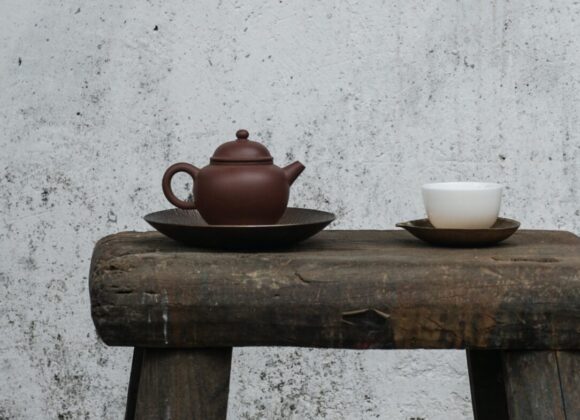“The king of mushrooms”, otherwise known as Chaga is not your average mushroom. Unlike many other fungi, Chaga starts growing from the inside of a tree, instead of developing on the surface. As it grows and matures, it protrudes from the tree. You’ll be able to recognize Chaga by its dark, almost black exterior. Looking like something has burnt on the tree. From the inside, it’s a rich orange-brown color with a corky texture. Drinking Chaga is not a new phenomenon. The mushroom is packed with antioxidants and healthy compounds that have been known and consumed in folk medicine for centuries.
The scientific name of Chaga mushroom is Inonotus obliquus. Chaga is not a recent discovery early eastern Slavic populations in Europe used it to treat a variety of internal and external issues. They used the fungi for stomachaches, kidney issues, lung problems, inflammation of the joints, and treating tumors. Chaga was also popular as a topical application for skin diseases. It was ingested as a tea to increase overall vigor, immunity, and health.
Drinking Chaga
Drinking Chaga is the most common way of consuming it. A crucial part of the processing is heating – it expands the cell walls of the mushroom, allowing for more nutrients to become bioavailable for human consumption and produce a stronger healing potion.
Yet it’s best to keep Chaga under boiling temperatures. The length of brewing is something we recommend you experiment with, to adjust it to your taste. The longer you let your tea simmer, the richer the color, flavor, and potency. Some people like to let their tea simmer over several days. For easier preparation use Chaga chunks.
RELATED: Does boiling Chaga ruin it?
Our favourite way to prepare the tea is using around 15 grams of Chaga nuggets in 1 litre of water. Letting it simmer between 50-80 degrees Celsius, for 4 to 5 hours for a beautiful colour and taste.
chagamushroom.co.uk
Re-using Chaga
Chaga nuggets can be reused five times. Avoid letting the water come to a boil while the fungus is in it. When you finish brewing a batch of tea, strain out the Chaga chunks and make sure to set the nuggets on the side to dry. Once they’re all dried up, store the pieces in a cool, dry, and dark place.
How much Chaga should you drink?
Generally talking, a cup or two of Chaga tea in a day is good for boosting your health. When dealing with a serious health concern, we’ve heard people drinking up to six cups of tea daily.
Unfortunately, you won’t feel any immediate effects from consuming Chaga. The benefits accumulate over time, with long-term use. So it’s best to get into a habit of incorporating the superfood into your diet through various products and recipes.
Is Chaga really good for you?
Chaga is a natural anti-inflammatory, helps lower blood sugar, reduces blood pressure, alleviates arthritis, and even supports preventing and slowing down the progression of cancer cells.
The mushroom has been famous for its many skin benefits, like helping to regenerate damaged skin cells, and nurturing the skin with enzymes. Due to its high antioxidant value, Chaga helps your body fight free radicals. The antioxidants are found in the outer layer of the mushroom, called Sclerotium, which has a very high melanin content. Which helps to protect your skin from UV damage. Being a natural anti-inflammatory, Chaga has been used in treating many areas of skin inflammation like psoriasis, eczema, allergic rashes, and more.
There are many more benefits of Chaga, for your well-being as well as skin support. What makes Chaga mushroom so incredibly effective in skin health, is the ability to strengthen the skin’s own resilience to damaging factors found in nature.
RELATED: 5 Benefits of Chaga for skin health
When should you be drinking Chaga?
Technically Chaga can be consumed any time of the day since it doesn’t contain any natural caffeine, therefore won’t disrupt your sleep. But the adaptogenic properties of Chaga make it a great way to start the day. Mushroom coffee has also become popular, so when choosing a product or getting a Chaga drink from a cafe, make sure to clarify whether or not it contains caffeine.
Scientists have found out that Chaga does work as an effective energy booster, in a test with animals given Chaga mushroom had longer physical endurance and fatigued less quickly compared to mice not given any of the mushroom.
RELATED STUDY: Effect of Inonotus Obliquus Polysaccharides on physical fatigue in mice
We suggest you to try Chaga out for a few days, and see which effect does it have on your body. Some people may wish to avoid it in the evenings when winding down from a busy day.
How does Chaga taste?
Chaga tastes and smells like tree bark–but, and that in a positive way. Once processed, the fungus has beautiful sweet undertones to it. Taste is often a good indicator of the mushrooms’ source and quality.
As we have mentioned before, it’s easy to be fooled by money-hungry suppliers. That is because it’s hard to distinguish the quality of Chaga by looks alone. You need to know what you’re asking for and trust the integrity of your seller if you’ve decided to purchase Chaga.
RELATED: Not everything that’s good for us tastes bad
Chaga tincture | Double Extraction
When you get tired of drinking tea, remember that a double extraction tincture is the most concentrated way to consume Chaga.
For the ultimate healing potent, a combination of alcohol and water (specifically hot water) is used. This guarantees that all the mushroom’s compounds, triterpenes, and polysaccharides, end up in your extract. That way you’ll be able to enjoy all the benefits that Chaga can give, like reduced risk of cancer, boosting the immune system, antioxidant troves, and more.
It is best used at the onset of colds, during seasonal swings, or to combat recurring immune-system issues. Tinctures are also easy to store since they don’t need refrigeration.
RELATED RECIPE: Chaga Tincture | Double Extraction.










